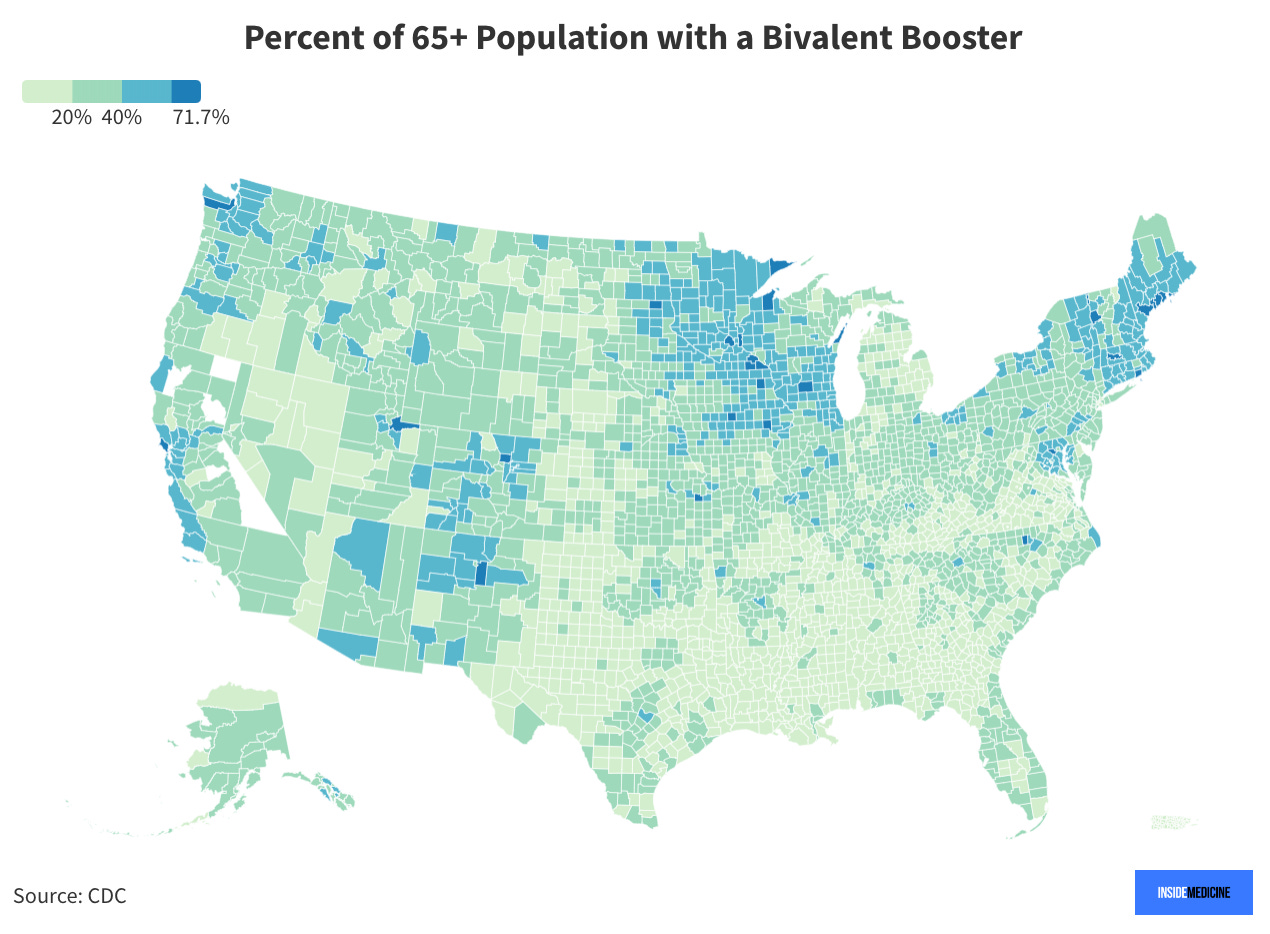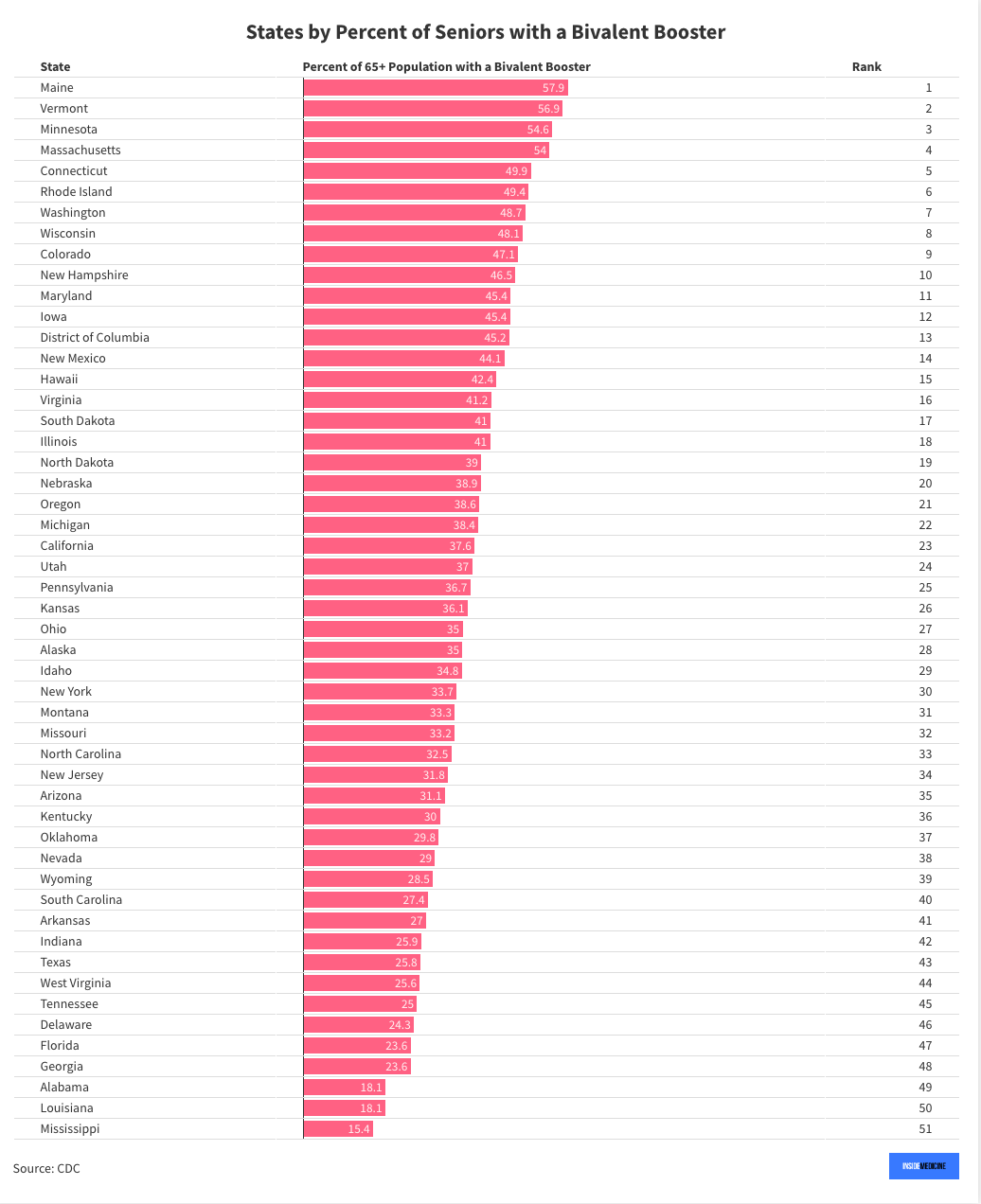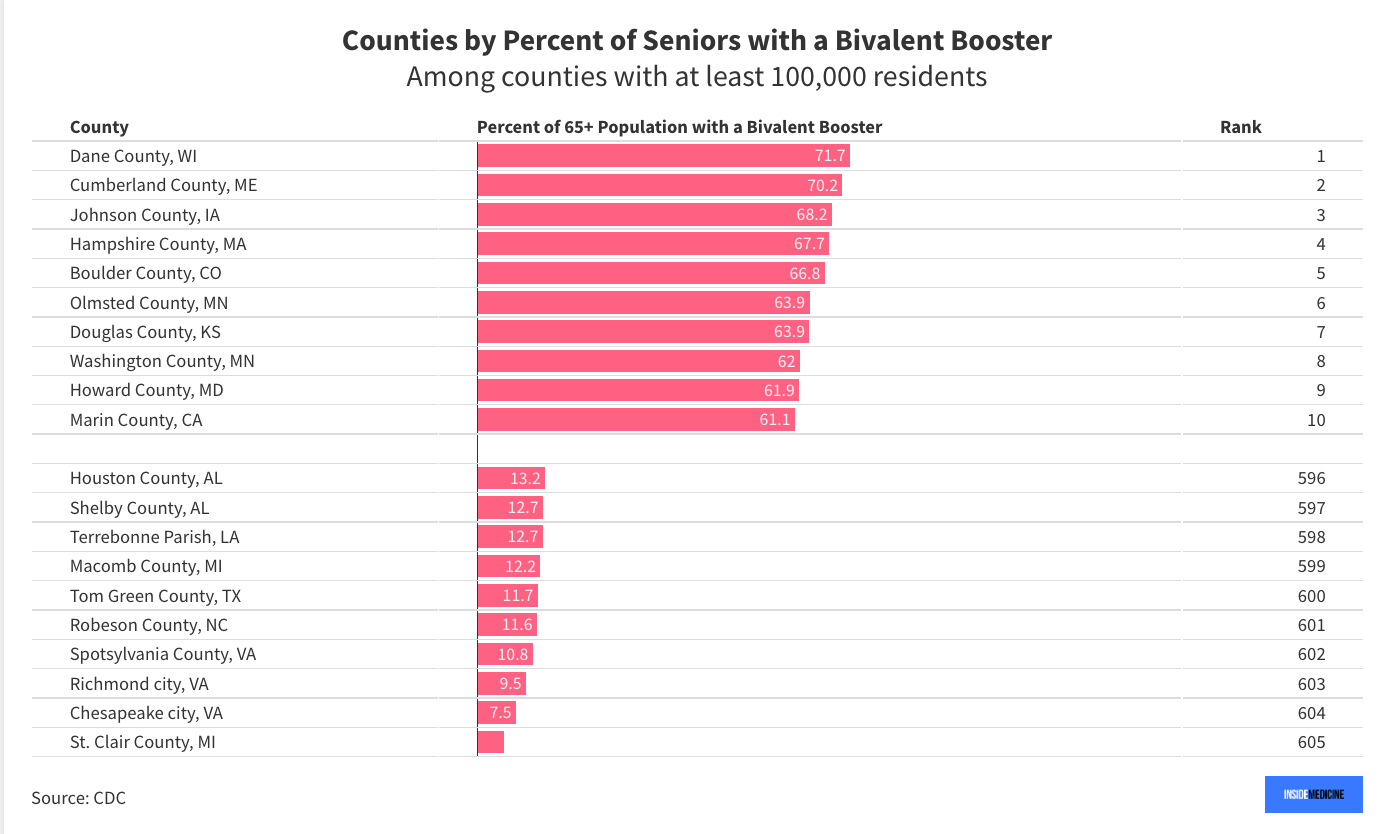Data snapshot: Covid-19 bivalent booster uptake winners and losers among seniors.
Top ten best and worst US states and counties, as of today. Florida takes a dive in the rankings.
I’m a ER physician and a public health researcher. I write this newsletter everyday. To help me keep it free to everyone, please consider upgrading. I appreciate all of your support!
Interest in the Covid-19 mRNA bivalent booster—the new vaccinations which contain some of the original virus spike protein and some of the Omicron virus spike protein—has been, let’s say, mixed. In the US, just 15.5% of the adult population and 34.2% of those ages 65 and up have received a bivalent booster. But the numbers are dramatically different in various areas of the country.

Let’s focus on seniors. Indeed, while boosters decrease infection temporarily for everyone, clearly, there are groups of people who absolutely need to stay up-to-date on their booster vaccines in order to stay out of the hospital: older people and people with higher vulnerability to SARS-CoV-2. That’s because within these populations, there are individuals for whom a SARS-CoV-2 infection is likely to either cause Covid-19 pneumonia (albeit that’s increasingly unusual, and likely limited to the profoundly immune-compromised), or a life-threatening exacerbation of an underlying medical problem such as heart failure (these latter scenarios are what drive most hospitalizations and Covid-19-related deaths these days,—i.e., Covid “tip-over”).
With that in mind, bivalent booster uptake at the state and county level in the older population probably represents the best proxy we have on where the risks of hospitalization surges are likely to occur. Places with high rates of bivalent booster uptake among seniors are less likely to have Covid-19-related surges in hospitalization than those with low rates.
Above is a county-level US map, as of December 12, 2022, on bivalent booster uptake among seniors. Below is a ranking of US states, followed by the best and worst counties in the nation among counties with >100,000 residents.
How does your state stack up?
I can’t help but notice that Florida has fallen markedly in the rankings. Among seniors, Florida ranked 29th out of 51 states (including Washington, DC) for primary vaccine series uptake, and 41st out of 51 for the first booster. However, in recent months, Florida’s Surgeon General has spoken frequently to undermine the vaccine. The effect may be decreased interest in the vaccine across all ages, including seniors, which could become very costly. Florida seniors rank 47th on bivalent booster uptake. Florida is also a state that ranks among the highest in terms of the number and share of older people living there. Not a good setup.
Meanwhile, it’s nice to see Marin County, CA (near where I grew up) in the top 10. Prior to the Covid-19 pandemic, Marin—a liberal enclave—had been an area with low pediatric vaccination rates, as anti-vaccine movements infiltrated into “crunchy” areas. But work before and during the pandemic has turned that around. Marin has had 315 Covid-19 deaths out of a population of 250,000 (125 deaths per 100,000 people). Compare that to the United States as a whole, where we’ve had 1.1 million Covid-19 deaths among 330 million people (333 per 100,000 people). If the US had the same death rate due to Covid-19 as Marin County has had, there would have been “just” 412,500 Covid-19 deaths during the entire pandemic, or around 687,500 fewer deaths.
Thanks to Benjy Renton for finding this data and making it easy for us all to visualize.
Inside Medicine is written five days per week by Dr. Jeremy Faust, MD, MS, a practicing emergency physician, a public health researcher, and a writer. He blends his frontline clinical experience with original and incisive analyses of emerging data—and to help people make sense of complicated and important issues.
Did you like this? Please share it and follow me on Twitter, Instagram, and Facebook!






Thank you. I agree Florida is of concern.